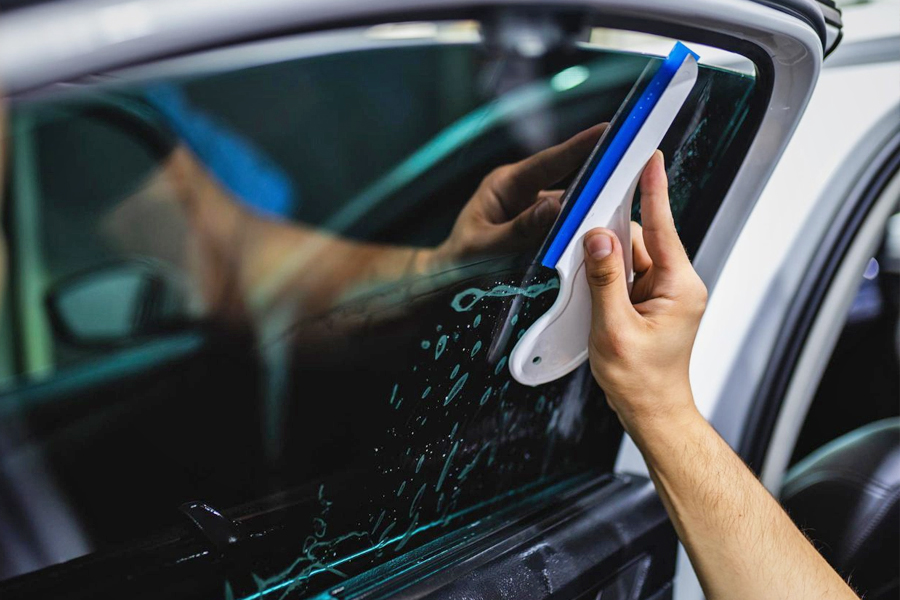Window Tinting Laws and Standards: What You Need to Know Prior To Tinting Your Car
Before waging home window tinting for your automobile, it is necessary to familiarize yourself with the varied laws and guidelines that control this practice throughout different states. These policies determine the permitted degrees of tint darkness, commonly gauged by visible light transmission (VLT) portions, and include specific specifications for front windshields focused on guaranteeing roadway safety and security. Furthermore, certain territories may provide medical exceptions for individuals with certifying problems. Recognizing these intricacies can conserve you from possible lawful ramifications, however what are the certain rules in your state?
Review of Window Tinting Rules
Home window tinting regulations are frequently based on variation throughout different jurisdictions, mirroring local laws and safety and security considerations. These laws dictate the allowable levels of tint darkness and reflectiveness on automobile windows, ensuring that motorists maintain adequate presence while additionally shielding versus harmful UV rays and heat.
Most policies identify home window tinting based on the Visible Light Transmission (VLT) portion, which shows the amount of light that can pass through the home window. Usually, lower VLT portions represent darker tints. Laws typically separate in between the front, side, and back windows, with stricter restrictions put on the front windscreen to improve safety for both the driver and various other roadway users.
Furthermore, some jurisdictions enforce restrictions on the reflectivity of the color, avoiding too much glow that could harm visibility. Exceptions to these legislations might exist for people with details clinical conditions requiring added sunlight security. Conformity with window tinting guidelines is vital, as infractions can cause fines, obligatory removal of the tint, and potential rises in insurance costs. It is important for car owners to acquaint themselves with neighborhood regulations before proceeding with window tinting setups.
State-by-State Tint Rules
Comprehending the particular window tinting policies in each state is vital for lorry owners looking for to adhere to the regulation. Each state in the U.S. has actually developed its own set of guidelines regulating home window tinting, which can vary significantly. These guidelines usually dictate the allowed degrees of tint darkness, the kinds of home windows that can be tinted, and any type of medical exemptions that might use.
For example, states like The golden state have strict constraints on color darkness for front windows, while others, such as New Mexico, might allow darker colors. Furthermore, specific states mandate particular visibility percentages for various home windows, including the windscreen, front side windows, and back home windows. It is essential for auto proprietors to acquaint themselves with their state's legislations to avoid possible fines or fines.
Furthermore, some states may call for a certification sticker label to be put on colored home windows, showing conformity with state regulations. Failing to abide by these policies not just takes the chance of legal repercussions yet can also influence safety and security and exposure while driving. Therefore, lorry owners should perform complete research study or speak with regional authorities to guarantee complete understanding and conformity with state-by-state tint laws.
Allowed Tint Levels and Types
Several lorry owners might be stunned to discover that allowed tint degrees and kinds differ extensively throughout various states. Each state has established its own policies pertaining to the permitted darkness and reflectivity of window color, commonly determined by Visible Light Transmission (VLT) percentages. VLT refers to find out here now the quantity of light that can travel through the colored home windows; therefore, a lower percent suggests a darker tint.

Furthermore, the kinds of tint materials enabled can differ, with some states restricting metal or mirror-like finishes. It is essential for automobile proprietors to familiarize themselves with their state's particular legislations to make sure compliance. Non-compliance can result in penalties, necessary elimination of the tint, or various other lawful consequences, making it vital to understand these guidelines before waging setup.
Medical Exceptions for Tinting
While not all states give allocations for medical exemptions regarding home window tinting, those that do identify the necessity for specific individuals to enhance visibility and comfort because of clinical problems. Numerous clinical conditions, such as lupus, skin cancer cells, and specific eye problems, can render individuals particularly conscious sunlight. These people might require darker tints to secure themselves from dangerous UV rays and glare.

It is essential visite site to note that despite a clinical exception, there might still be limitations on the degree of tint allowed. Compliance with state legislations guarantees that people are both protected and within legal restrictions. Those thinking about medical exemptions should contact their neighborhood Division of Motor Vehicles or equal authority to recognize the demands and treatments necessary to request an exemption properly.
Charges for Non-Compliance
Falling short to follow home window tinting legislations can bring about significant penalties, which vary by state. Regulation enforcement firms are encouraged to provide citations for automobiles that do not comply with the defined tinting laws. These penalties usually include fines, which can vary from modest quantities to several hundred bucks, depending on the seriousness of the violation and the state concerned.
In some territories, duplicated offenses might cause intensifying fines or additional penalties, such as necessary court appearances. In addition, non-compliance might demand the elimination of illegal tinting, often at the proprietor's cost. In severe instances, regular transgressors may deal with suspension of their car registration until conformity is accomplished.
In addition, insurance coverage ramifications may occur from receiving multiple citations for window color infractions. Insurance firms might watch such offenses as a sign of riskier behavior, potentially bring about increased premiums or difficulty in insurance coverage.
To prevent these penalties, it is essential for lorry proprietors to familiarize themselves with their neighborhood home window tinting legislations and ensure that their lorry complies (Window Tinting). This positive method not only avoids lawful implications yet likewise promotes road safety
Conclusion

A lot of guidelines classify home window tinting based on the Visible Light Transmission (VLT) portion, which shows the amount of light that can pass through the home window. Conformity with home window tinting laws is critical, as violations can result in fines, required removal of the color, and potential rises in insurance costs.Comprehending the details home window tinting regulations in each state is crucial for car owners looking for to comply with the law. These guidelines typically dictate the allowable degrees of color darkness, the kinds of windows that can be tinted, and any medical exceptions that may use.
For instance, states like California have rigorous restrictions on color darkness for front windows, while others, such as New Mexico, may allow darker colors.